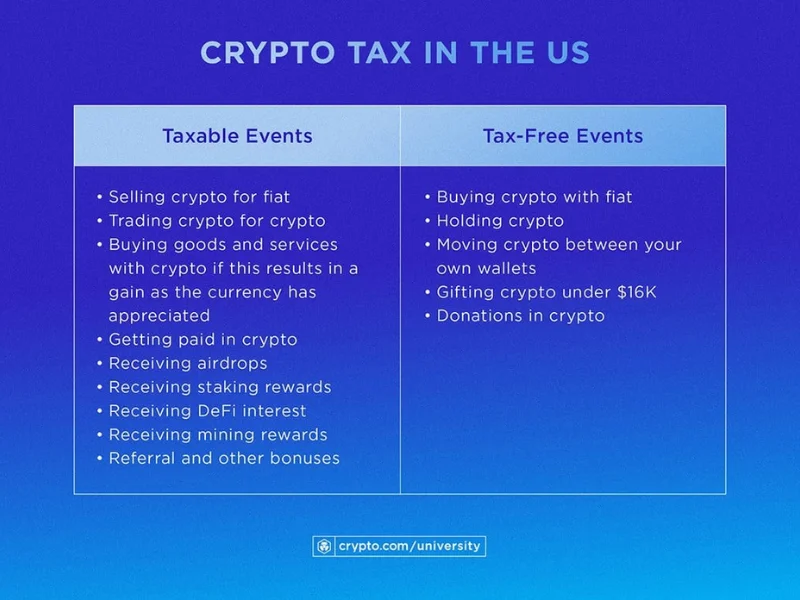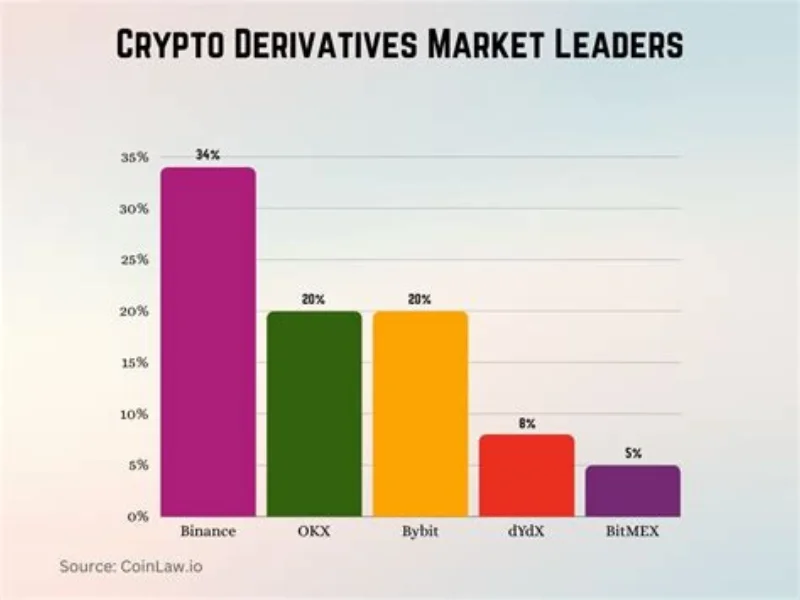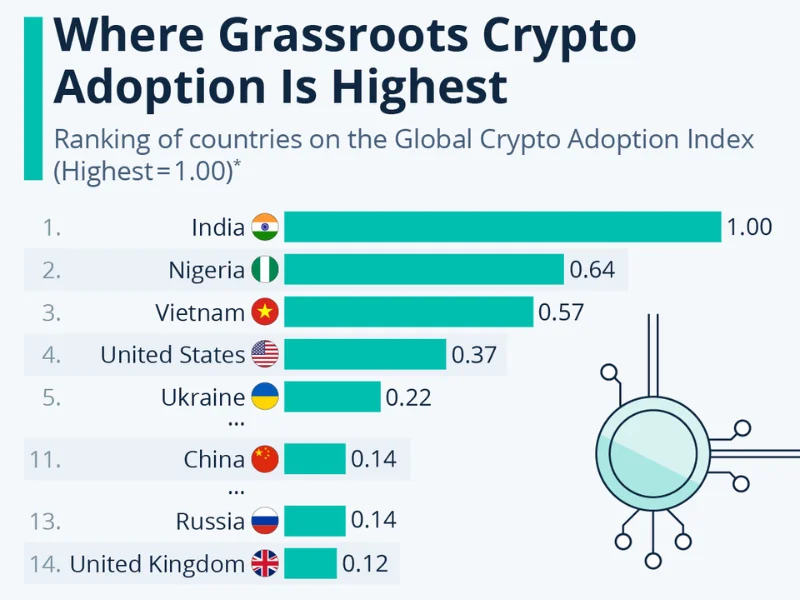1) Introduction
Purpose of this article
This article gives you a crisp, data-driven update on the crypto market right now and explains how capital gains taxation—from the U.S. to Europe and Asia—can shape prices, liquidity, investor behavior, and long-term adoption. You’ll see where markets and on-chain activity stand today, the regulatory and legal backdrop, and exactly why tax rules can trigger rallies, sell-offs, or long periods of reduced volatility.
Why staying updated matters
Crypto Taxation Impact turn on policy and plumbing as much as on narratives. In 2025, spot BTC/ETH ETFs, MiCA going live in the EU, and country-specific tax regimes are reshaping flows, while macro expectations (rates, inflation) still move Bitcoin like a high-beta macro asset. Missing these shifts means missing the drivers behind price. For instance, the total crypto market cap is hovering around $3.8–3.9T with Bitcoin dominance ~56%—levels that can change fast when policy headlines hit.
Sources used throughout
We synthesize CoinDesk (news/analysis), Glassnode (on-chain), Bloomberg/Reuters/FT/WSJ (macro, legal), CoinGecko/CoinMarketCap (market data), CoinShares (institutional flows), Kaiko (liquidity), DeFiLlama (TVL/stablecoins), CryptoQuant (reserves/flows), Messari/Dune (ecosystem and dApp analytics), DL News (regulatory), and official sources (ESMA/EU MiCA, BIS/IMF, IRS/HMRC/BMF). Where facts are likely to change, we cite the freshest primary sources inline.
What you’ll learn (key themes)
- Market movements: Where prices and capitalization sit today; what’s driving week-to-week swings.
- Tech innovations: Ethereum’s Dencun impact, Solana client upgrades, and security advances.
- Regulation/legal: SEC & EU MiCA updates; high-profile cases.
- Adoption trends: ETFs, wallets, DeFi, NFTs, CBDCs & stablecoins.
- Taxation lens: How capital gains rules can pull forward or delay selling, alter ETF mechanics, and nudge liquidity between venues and jurisdictions.


2) Global Market Trends
Current market performance & capitalization
- Global market cap: ~$3.87–3.88T today; BTC dominance ~56%; stablecoins near $280B+ share of the market. Bitcoin’s individual market cap sits around $2.19T.
- 24h / 7d: Daily moves are modestly negative into today; weekly moves have been choppier on rate-cut odds and ETF flow swings. (See next subsection on flows/liquidity.)
- Context: Bitcoin set fresh records in mid-August (near $124k intraday) before consolidating, reflecting an interplay of macro and ETF demand. Reuters
Why taxation matters here: capital gains regimes shape when holders realize profits. Expect year-end selling, new-tax-year resets, and jurisdictional migrations (traders routing activity to more favorable regimes) to intensify around major policy changes.
Institutional involvement & economic influence
- Fund flows: CoinShares’ latest weekly report (Aug 25) shows $1.43B net outflows—the biggest since March—amid Fed-policy jitters; the prior week saw $3.75B inflows (4th-largest on record) led by Ethereum products. The swing underscores how sensitive flows are to macro and policy headlines.
- Corporate balance sheets: Strategy (formerly MicroStrategy) disclosed another 10,000 BTC (~$1.1B) purchase on Aug 22, keeping corporate treasuries an incremental demand source. Messari
- Macro linkages: Kaiko notes BTC’s pushes toward ATHs aligned with a softer USD and rate-cut odds, reinforcing macro sensitivity.
Taxation angle: In the U.S., long-term vs short-term rates encourage 12-month+ holding for tax efficiency, often reducing free float near long-term thresholds. ETF structures and in-kind mechanisms can also defer taxation inside funds, affecting primary/secondary market liquidity and dampening forced selling.
3) Technological Developments & Innovations
Blockchain advancements
- Ethereum’s Dencun (EIP-4844) in March 2024 slashed L2 data costs (blobs), materially lowering average user fees and enabling surges in L2 activity through 2024–25. DeFi Llama
- Ethereum staking and structure: Glassnode’s H1 2025 institutional-grade report maps ETH’s monetary/derivatives structure and staking evolution post-Merge/Shanghai/Dencun, informing risk, issuance, and liquidity.
- Solana performance & client diversity: The Firedancer client (Jump Crypto) continues to progress toward improving throughput/resilience, with public updates on performance testing and timeline. Halborn
Security enhancements
- DeFi security/hacks: DeFiLlama’s hacks dashboard and security tooling show a maturing risk framework: more audits, bug bounties, and coverage, with real-time incident data public. Cryptoquant
- On-chain risk lenses: CryptoQuant’s exchange reserves and miner/OTC balances give forward-looking supply/risk clues often preceding volatility—e.g., BTC exchange reserves trending near ~2.5M BTC, multi-year lows.
Smart contracts and dApps
- dApp + DeFi growth: Messari’s Q2 2025 chain reports show Ethereum DeFi TVL rebounded 33% QoQ to ~$62B, Solana DeFi TVL up ~30% QoQ to ~$8.6B, illustrating multi-chain capital formation.
- On-chain markets: Dune dashboards track Uniswap V3 volumes/users, reflecting steady DEX engagement that competes with centralized venues in liquidity provision and price discovery.
4) Regulatory & Legal Landscape
Current regulatory updates
- EU MiCA is now operational in phases (stablecoin rules from June 30, 2024; broader CASP rules by Dec 30, 2024; supervisory guidance into 2025). ESMA details scope (asset-reference/e-money tokens), disclosures, and authorization.
- U.S. ETFs: Spot Ether ETFs began trading July 23, 2024, following Jan 2024 BTC ETF approvals—structurally key for tax, custody, liquidity, and institutional access.
- UK: The FCA’s financial promotions regime tightened retail marketing rules for Crypto Taxation Impact in 2024/25, with ongoing guidance and enforcement through 2025. FCA
Legal cases & precedents
- Binance/CZ: U.S. DOJ settlement (Nov 2023) and CZ sentencing (Apr 2024) continue to shape exchange compliance expectations and bank-partner risk tolerances. ReutersCoinDesk
- Coinbase case: After 2024 rulings that let much of the SEC’s case proceed, the SEC moved to dismiss the lawsuit in Feb 2025, a major inflection in U.S. enforcement stance.
Taxation angle: Policy momentum toward ETF acceptance and clearer regimes (MiCA) reduces frictional tax uncertainty, channeling flows to regulated wrappers. Conversely, ambiguous rules (e.g., on staking or wash-sale treatment) can freeze participation until clarified.
5) Adoption & Market Sentiment
Retail and institutional adoption
- Market-wide participation grew strongly into mid-2025 (Q1/Q2 industry reports), despite rotation between majors and alt-sectors. CoinGecko’s 2025 quarterly reads show the rise in stablecoins, ETFs, and RWAs as on-ramps for both retail and pros.
- Education/newcomers: Beginner guides from outlets like CoinBureau continue to onboard retail, especially during rallies.
Social media & influencers
- Sentiment data: Santiment’s dashboards track social dominance and funding/derivatives positioning—useful for spotting sentiment peaks/troughs that often precede funding flushes.
Taxation angle: In high-tax regimes, retail is more likely to hold through short-term volatility to cross long-term thresholds; institutions prefer fund structures that enable in-kind creations/redemptions (where permitted) to manage taxes more efficiently.
6) On-Chain & Liquidity Activity
Tracking on-chain activity
- Active addresses & fees: Glassnode’s weekly “Market Pulse” summaries show softening active addresses and lower fees during consolidation phases—classic risk-off markers even when transfer volumes spike on volatility.
Liquidity & market structure
- Exchange reserves: BTC on exchanges near ~2.5M BTC—7-year lows—imply thinner immediate spot supply; ETF custody holds more coins off-exchange.
- Order-book depth: Kaiko reports record highs in 1% market depth for BTC during 2025 and improving alt depth through the summer—meaning bigger orders can clear with less slippage than in prior cycles.
Taxation angle: Thin on-exchange supply combined with tax-aware holding (waiting for long-term status) can amplify upside moves on incremental demand—and conversely accelerate drawdowns once profit-taking finally triggers.
7) Emerging Trends & Future Outlook
NFTs—beyond collectibles
NFT activity has rotated from headline-grabbing art sales to gaming, loyalty, and ticketing, with policy centers emphasizing speech/privacy concerns and the need for clear rules as utility broadens.
DeFi’s continued evolution
DeFi’s TVL recovery in 2025 is broad-based (Ethereum, Solana, BNB, Avalanche), with real revenue capture and improved risk tooling; DeFiLlama remains the canonical TVL and stablecoin composition resource for comparative tracking.
Stablecoins & CBDCs
- Stablecoins: A structural growth driver; 2025 reports show double-digit-$B expansions for USDT/USDC and continued chain diversification.
- CBDCs: 91% of central banks surveyed by the BIS in 2024 were exploring CBDCs; IMF 2025 notes focus on offline/limited-connectivity design—a signal that pilots are tackling real-world constraints.
Taxation angle: If stablecoin payments receive de-minimis relief (e.g., small purchases exempt from capital gains), everyday use could jump. Conversely, strict capital gains on tiny spend events suppress retail payments use even when tech is ready.
8) Investor Insights & Sentiment Analysis
Behavior patterns in volatility
Nansen and Santiment data (whale wallet cohorts, social/funding shifts) continue to show buy-the-dip and de-risk behaviors clustering around macro events and policy headlines—especially ETF flow surprises and regulatory developments.
Risk management in 2025
Messari research highlights sector rotation (L1s/L2s, RWAs, DeFi) and the utility of hedging (options, perps) to manage taxable events (e.g., hedge instead of selling before long-term holding dates).
Taxation angle: Expect tax-loss harvesting near year-end where allowed; in the U.S., the wash-sale rule still does not apply to crypto, but proposals have surfaced—any change here would materially alter harvesting strategies. Koinly
9) Case Studies & Market Examples
Bitcoin halving events & price impact
The April 2024 halving (block subsidy to 3.125 BTC) reduced new supply; post-halving performance this cycle has been more measured than prior epochs, with ETFs and macro arguably diluting the “halving beta.” Glassnode and CoinDesk provide the best longitudinal context.
Ethereum’s transition (Merge → withdrawals → Dencun)
Ethereum’s multi-year upgrade arc has lowered fees on L2s, influenced issuance/burn dynamics, and expanded staking participation—together reshaping ETH’s risk/reward profile for allocators. DeFi Llama
10) Impact of Global Events on Crypto Taxation Impact
Economic factors driving adoption
BTC traded like macro beta in 2025, rising with rate-cut hopes and a softer USD; ETF inflows/outflows amplify these swings. Kaiko and Reuters captured these relationships around fresh ATHs. Reuters
Geopolitical events
Policy postures (e.g., strategic reserves or retirement-plan access), stablecoin frameworks, and cross-border CBDC pilots are turning Crypto Taxation Impact rails into policy tools, affecting flows and liquidity distribution across regions. (See BIS/IMF for CBDC and DL News for MiCA/ETF flow snapshots.)


11) Key Insights from Industry Experts
Across research notes and interviews, experts expect ETFs + L2 scaling + stablecoins to keep deepening liquidity and compressing volatility bands over time, while policy certainty (MiCA, ETF structures, tax clarity) decides which jurisdictions lead. CoinDesk, Bloomberg/WSJ/FT coverage and Coin Center’s policy trackers reflect that pivot toward integration vs. isolation.
12) Capital Gains Tax: How Rules Move Markets
Here’s the core playbook on why taxation changes price action:
- Short-term vs long-term rates (U.S.)
- U.S. crypto is taxed as property; gains are short-term (ordinary income rates) if held ≤12 months; long-term preferential rates if >12 months. This creates “hold to day 366” behavior, reducing float and dampening volatility until long-term windows open—after which you can see clustered selling. Koinly
- U.S. crypto is taxed as property; gains are short-term (ordinary income rates) if held ≤12 months; long-term preferential rates if >12 months. This creates “hold to day 366” behavior, reducing float and dampening volatility until long-term windows open—after which you can see clustered selling. Koinly
- Wash-sale rule (U.S.)
- As of now, the wash-sale rule does not apply to Crypto Taxation Impact, keeping tax-loss harvesting attractive (sell to realize a loss, rebuy quickly). Any legislative change to include digital assets would likely reduce year-end harvesting and alter liquidity seasonality. Koinly
- As of now, the wash-sale rule does not apply to Crypto Taxation Impact, keeping tax-loss harvesting attractive (sell to realize a loss, rebuy quickly). Any legislative change to include digital assets would likely reduce year-end harvesting and alter liquidity seasonality. Koinly
- EU/UK/Germany
- UK HMRC: Crypto disposals generally trigger capital gains tax; guidance is specific about taxable events (selling, swapping, spending, gifting). Clear rules = fewer “policy shocks.” Blockpit
- Germany (BMF): Private Crypto Taxation Impact sales can be tax-free after one year holding (with important nuances), a powerful long-term holding incentive that reduces churn. Blockpit
- MiCA improves market clarity but doesn’t set tax; tax remains national—so cross-border investors still optimize around country-specific CGT.
- UK HMRC: Crypto disposals generally trigger capital gains tax; guidance is specific about taxable events (selling, swapping, spending, gifting). Clear rules = fewer “policy shocks.” Blockpit
- India
- Flat 30% tax on “virtual digital assets” plus 1% TDS on transactions. That regime has historically pushed activity offshore or into P2P/stablecoins; changes here would move local liquidity meaningfully. ClearTax
- Flat 30% tax on “virtual digital assets” plus 1% TDS on transactions. That regime has historically pushed activity offshore or into P2P/stablecoins; changes here would move local liquidity meaningfully. ClearTax
- ETFs & in-kind creation/redemption
- ETFs can defer capital gains inside the fund via in-kind transfers (where permitted), reducing forced distributions. Expanded in-kind mechanisms for ETH ETFs in 2025 improved efficiency and likely stabilized flows around rebalances.
- ETFs can defer capital gains inside the fund via in-kind transfers (where permitted), reducing forced distributions. Expanded in-kind mechanisms for ETH ETFs in 2025 improved efficiency and likely stabilized flows around rebalances.
Bottom line: Capital gains rules shift the timing of supply hitting the market. Friendlier long-term thresholds, de-minimis spending exemptions, and efficient fund mechanics tighten float and can support higher equilibrium prices—until those constraints roll off and selling windows open.
13) Conclusion
Recap:
- Markets sit near cycle highs with BTC dominance ~56%, global cap ~3.8–3.9T, and ETF flows driving week-to-week swings. Tech upgrades (Ethereum Dencun, Solana client diversification) are lowering fees and boosting throughput, while MiCA/SEC ETF approvals anchor a clearer regulatory path. On-chain signals show low exchange reserves and improving order-book depth, a potent mix for sharper moves when macro or policy surprises land. DeFi Llama
Why stay informed:
Rules—especially capital gains taxation—alter holder incentives and liquidity timing. To navigate, track CoinDesk/Reuters/FT for policy/legal, Glassnode/CryptoQuant for on-chain supply, CoinShares/Kaiko for flows/liquidity, and CoinGecko/CMC for up-to-the-minute market data.
Call to action:
- Map your holding periods vs. your jurisdiction’s CGT thresholds.
- If you’re U.S.-based, keep an eye on any wash-sale or de-minimis proposals.
- Consider ETF wrappers where appropriate and monitor in-kind practices that can influence realized taxes.
- Keep a living dashboard of flows (CoinShares), liquidity (Kaiko), reserves (CryptoQuant), and policy (ESMA/SEC/FCA).
FAQs (10)
- How are crypto gains taxed in the U.S.?
As property: short-term gains (≤12 months) are taxed at ordinary income rates; long-term gains (>12 months) at preferential rates. State taxes may also apply. Koinly - Does the U.S. wash-sale rule apply to crypto?
As of today, no. That makes tax-loss harvesting viable (sell/rebuy). If Congress extends the rule to crypto, expect a big shift in year-end trading behavior. Koinly - What about Crypto Taxation Impact UK?
HMRC treats most crypto disposals as CGT events. Records matter (cost basis, dates, fees). Some allowances and pooling rules apply. Blockpit - And Germany?
Private sales of crypto can be tax-free after a one-year holding period (nuances apply), which incentivizes long holding and reduces short-term churn. Blockpit - Does MiCA change EU Crypto Taxation Impact taxes?
No—MiCA is a market/regulatory framework; taxation remains national. Some member states are friendlier than others; your net returns vary by residence. - How do ETFs affect taxes?
ETF structures (especially with in-kind transfers) can reduce capital gains distributions, improving after-tax outcomes for holders vs. direct trading for some strategies. - Why do exchange reserves matter?
With BTC exchange balances around ~2.5M BTC, the immediate spot float is relatively tight; when demand spikes (e.g., ETF creations), price can move faster. - What’s the latest on Ethereum fees after Dencun?
L2 fees fell materially due to blob space (EIP-4844), boosting throughput and supporting user growth on rollups; that lowers friction for DeFi and dApps. DeFi Llama - Do legal cases still matter for prices?
Yes. The SEC’s dismissal of its suit against Coinbase in Feb 2025 signaled a softer U.S. enforcement stance and helped sentiment and flows. - Where can I track stablecoin and DeFi adoption?
Use DeFiLlama for stablecoin dashboards and chain TVL, and CoinGecko for stablecoin market-cap league tables.
